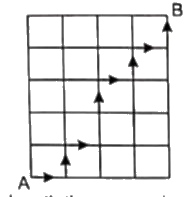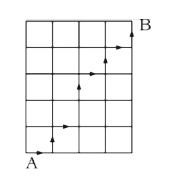A person free of disease is not necessarily healthy. Why?
Step-by-Step Solution:
1. Definition of Health: Health is defined not just as the absence of disease, but as a state of complete physical, mental, and social well-being. This definition was established by the World Health Organization (WHO) in 1948.
2. Components of Health: Health encompasses three main components:
- Physical Well-being: This refers to the proper functioning of the body and absence of physical ailments.
- Mental Well-being: This includes emotional stability, absence of mental disorders, and the ability to cope with stress.
- Social Well-being: This involves having supportive relationships and being part of a community.
3. Absence of Disease vs. Overall Health: A person can be free from disease (i.e., not suffering from any physical ailments) but may still experience issues related to mental or emotional health, such as anxiety or depression. These conditions can significantly impact a person's overall health and quality of life.
4. Interconnectedness of Health Aspects: The different aspects of health (physical, mental, and social) are interconnected. Poor mental health can lead to physical health issues, and vice versa. Therefore, achieving a balance among these aspects is crucial for overall health.
5. Conclusion: Thus, a person who is free of disease should not be automatically considered healthy. True health requires a holistic approach that includes emotional and social well-being alongside physical health.
- Physical Well-being: This refers to the proper functioning of the body and absence of physical ailments.
- Mental Well-being: This includes emotional stability, absence of mental disorders, and the ability to cope with stress.
- Social Well-being: This involves having supportive relationships and being part of a community.
Topper's Solved these Questions
- BOOK - ICSECHAPTER - HUMAN HEALTH AND DISEASE EXERCISE - PRACTICE QUESTIONS (Very Short Answer Type Questions)38videos
HUMAN HEALTH AND DISEASE
- BOOK - ICSECHAPTER - HUMAN HEALTH AND DISEASE EXERCISE - PRACTICE QUESTIONS (Short Answer Type-I Questions)20videos
HUMAN HEALTH AND DISEASE
- BOOK - ICSECHAPTER - EVOLUTIONEXERCISE - COMPETITION CORNER (Assertion and Reason Type Questions (For AIIMS aspirants))26videos
EVOLUTION
- BOOK - ICSECHAPTER - HUMAN REPRODUCTIONEXERCISE - SOURCE BASED QUESTIONS22videos
HUMAN REPRODUCTION
Similar Questions
Knowledge Check
- Question 1 - Select One
Which of the following methods is/are used in recovery of healthy plants from diseased plants ?
Aembryo cultureBmeristem cultureCsuspension cultureDanther culture
The first person to propose that disease is due to natural cause was
View SolutionBoron does not occur in the free state. Why?
View SolutionWhy is the primary structure of a protein necessarily linear (rather than branched) sequence of amino acids?
View SolutionGiven any for factors necessary for a healthy person.
View SolutionBecoming exposed to or infected with an infectious microbe does not necessarily mean developing noticeable disease. Explain.
View SolutionA person is to walk from A to B. However, he is restricted to walk only to the right of A or upwards of A. but not necessarily in the order shown in the figure. Then find the number of paths from A to B.
 View Solution
View SolutionA person is to walk from A to B. However, he is restricted to walk only to the right of A or upwards of A. but not necessarily in the order shown in the figure. Then find the number of paths from A to B.
 View Solution
View Solution

